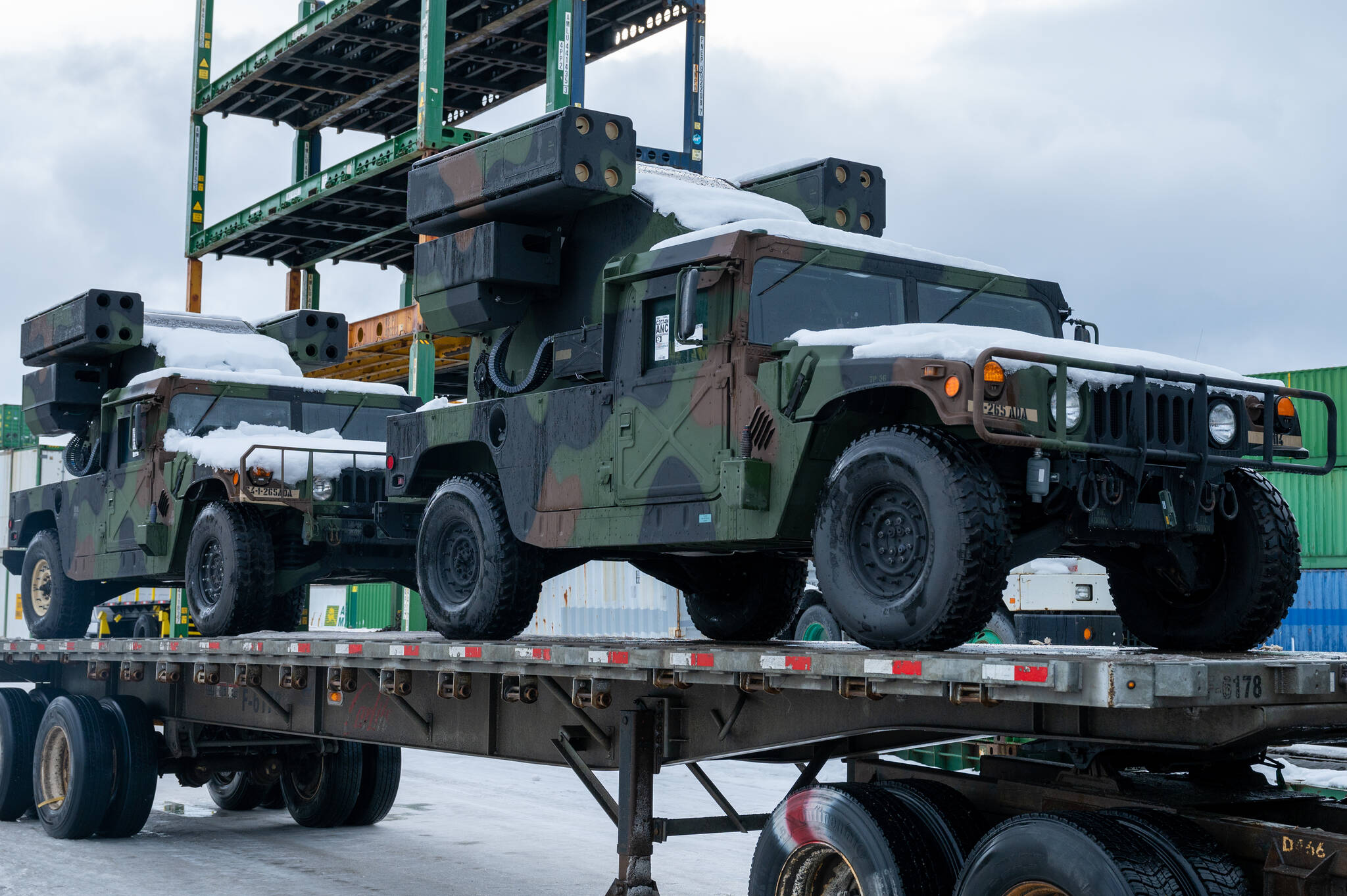From British Columbia to northern Alaska, the Department of Defense and Canadian military are holding Arctic Edge 2022, a major exercise held every two years to improve Arctic warfighting capability.
From mine countermeasures in Juneau’s harbor to special forces gaining proficiency in operations in the deep Arctic, the exercise stretches across the entire state, said public affairs officer, Air Force Capt. Lauren Ott.
“Arctic Edge 2022 is the opportunity for us to practice tactical and operational activities in an extreme cold weather environment,” Ott said. “There’s roughly a thousand servicemembers between U.S. and Canadian servicemembers that are participating.”
[The feel of water: Artists work to rethink mental health and waterways]
Army and Air Force personnel will be simulating both long- and short-range air defense capabilities out of Eielson Air Force Base, Ott said, with Air Force
“It is exercising the (Joint Integrated Air and Missile Defense) capability here in Alaska. We have brought out the (short-range air defense)/Avenger system,” Ott said. “We are bringing out a Patriot system.”
The Patriot missile system, a long-range surface-to-air missile designed to be able to engage some inbound ballistic missile threats as well as regular aircraft and missiles, has never before been deployed to Alaska, Ott said.
“Part of the exercise will be simulating the use of these systems,” Ott said. “The Air Force participates by simulating the offensive object that the missile systems will be reacting to.”
Arctic Edge was first held in 2018, Ott said.
“I think the scope of the exercise, with the joint and combined nature, really speaks to the importance of the Arctic,” Ott said. “The participation of the Army, Navy and Air Force and Canadian allies- the ability to come together to execute this exercise really speaks to the strength of the relationships in the region.”
The realities of warfighting in the Arctic are demanding ones, Ott said.
“There’s absolutely considerations operating in an Arctic environment and the colder temperatures for equipment and personnel,” Ott said. “If there’s lessons for being more efficient going forward, we apply those lessons.”
Certain special operations elements will be getting an especially close look at that environment as they train further north, working with Alaska Natives to gain a better grasp of how to traverse the bitterly cold landscape.
“They’re going to more of the remote locations where they’re working with the Alaska Natives to gain familiarization with the region and the conditions. They’ll be exercising multiple capabilities: for example, traversing 60-80 miles of winter conditions with snowmobiles and their gear on their back to understand what it takes to be able to do that,” Ott said. “We have the fortune of having that relationship with the Alaska Native communities, who offer their expansive knowledge of the region from being here since time immemorial.”
That close relationship with Alaska Native communities has been a priority for Alaska Command, Ott said, from the commanding general on down.
“Lt. Gen. (David) Krumm places a lot of emphasis on fostering and maintaining those relationships,” Ott said. “When we have to go into one of those remote locations to gain this experience, we already have the contacts we can reach out to request support.”
The exercise will run until March 16, Ott said.
• Contact reporter Michael S. Lockett at (757) 621-1197 or mlockett@juneauempire.com.

